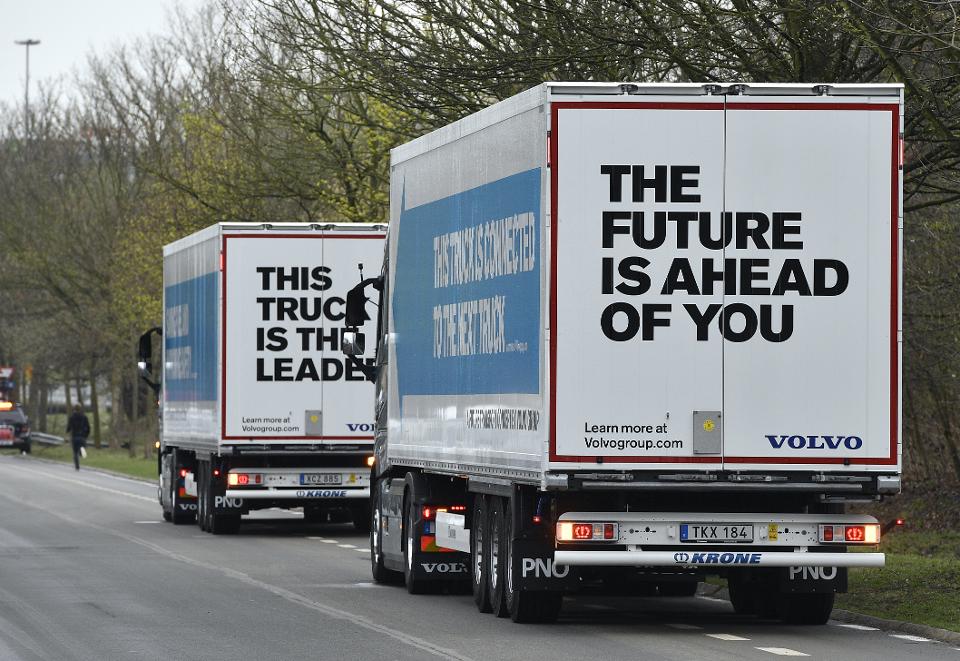
Railroads have a long history of experimenting with alternative fuels and new locomotive technologies in the search for better fuel efficiency, lower greenhouse gas emissions, and lower operating costs. Unfortunately, the record of railroads actually bringing potential innovations in locomotive design to fruition is more limited.
Instead, U.S. railroads have been largely satisfied with seeing fuel efficiency improve each time diesel-electric locomotives have been updated to comply with new emission standards issued by the Environmental Protection Agency.
Unfortunately, that “virtuous cycle” was broken when the latest emission regulations – known as Tier 4 – took effect in 2015. Tier 4 produces lower emissions and burns more fuel. Thus, diesel-electric locomotive technology appears to be reaching its limitations and railroad will need to look elsewhere for technological enlightenment.
Meanwhile, trucking has done anything but stand still. Since 2009, the U.S. motor carrier industry has been immersed in the federally supported SuperTruck project, which charged leading truck makers with improving the fuel efficiency of a diesel-powered Class 8 tractor-trailer rig by 50 percent, as measured in ton-miles per gallon, relative to 2010 technology.
By the program’s end in 2015, the manufacturers had shot well beyond that goal. By 2016, 21 different technologies developed under the SuperTruck program had been commercialized. The program’s success has led to a SuperTruck II program, with a goal of doubling truck fuel efficiency.
Electric, driverless and other new alternatives
That is not all railroads have to contend with. Trucking is also actively pursuing a number of alternative fuels – such as natural gas, electric, and hydrogen fuel cells. A few trucking fleets are already cutting costs by relying on natural gas, where prices have fallen dramatically in recent years. Natural gas also offers the prospect of lower greenhouse gas emissions and air pollutants, a rising concern for truckers after nations like France and India began passing bans on diesel-powered vehicles.
Electrification is particularly promising in the near term, as it could offer substantial reductions in fuel and maintenance costs. For example, Mercedes last year unveiled the Urban eTruck, which hauls up to 26 tons and has a range of just over 120 miles per charge, and Tesla is set to introduce a heavy-duty, electric semi-truck this year. Tesla’s new truck will rely on much of the same motor technology the car manufacturer uses in its upcoming Model 3, a $35,000 electric sedan.
Within the decade, a critical game-changer for rail, from a competitive cost perspective, could be the development of autonomous trucking. A key first goal for the industry is platooning – a lead truck with a driver followed by several driverless trucks. Wireless communications allow the following trucks to brake, accelerate, and maneuver based on the platoon leader.This technology is already in the on-road testing phase. Platooning – eventually followed by fully autonomous trucks – will significantly reduce trucking’s costs for labor, fuel, and insurance.
Does the competitive edge erode?
The bottom line for railroads: They are facing a competitor that is aggressively working across multiple technologies to reduce operating costs. Such cost reductions will enable trucking to go after longer-distance routes that traditionally were “safe” for railroads, particularly the valuable intermodal (container) segment of rail traffic. Without operational and technological innovation, railroads could see their competitiveness erode over a larger share of their traffic base.
Admittedly, the U.S. government has failed to sponsor the railroad equivalent of SuperTruck. But have railroads prodded, looking to pursue the several technologies that might be worth a first or second look.
Beginning in the 1980s, LNG-fueled locomotives have been the subject of periodic experimentation and evaluation. In 2012, with the increase in domestic natural gas production – and the fall in prices, the railroad industry took yet another look. Testing of a new generation of LNG-fueled locomotives was carried out on BNSF, CN, CSX, and Union Pacific for several months. In the end, however, the cost of the infrastructure necessary to handle LNG fueling, the difficulty of using dual-fuel systems, and, perhaps most importantly, the decline in diesel fuel prices quashed these tests.
Today, the only railroad actively using LNG is Florida East Coast Railway (FEC), which runs 24 dual-fuel locomotives. Unlike the major Class I railroads, however, which have many thousands of miles of rail network, FEC is a regional railroad with only 360 route miles, negating the need for massive fueling infrastructure investment.
Options for rail innovation
Other potential technologies worth investigating or revisiting are hybrid locomotives, gas turbines, electrification, and hydrogen fuel cells. Gas turbines, for example, were first used in US mainline freight service during the 1950s. While proving themselves more than capable of handling heavy freight trains, high fuel costs and higher than expected maintenance eventually forced their retirement in the 1960s. More recently, with the decline in natural gas prices, Russia has introduced several gas turbine locomotive prototypes for testing on its national railway network.
The benefits of electrification, including lower energy costs per mile, traveled, lower maintenance costs, and zero emissions provide compelling reasons to look at this technology —which is already in use for freight in Europe. Upfront infrastructure costs for catenary, power stations, rail equipment, and the like remain a major stumbling block, although new power storage technologies could change this picture in the future.
Finally, hydrogen fuel cells are an attractive technology for similar reasons. First, there are virtually no harmful end-user emissions from the use of hydrogen in a fuel cell. Another advantage is that hydrogen fuel cells, particularly those using polymer electrolyte membrane fuel cells, are up to 60 percent more energy efficient than internal combustion engines.
In short, there’s no shortage of technological alternatives for railroads to consider and eventually pursue – and they’re running out of road with current diesel-locomotive technology and time against fast-moving trucking rivals.








